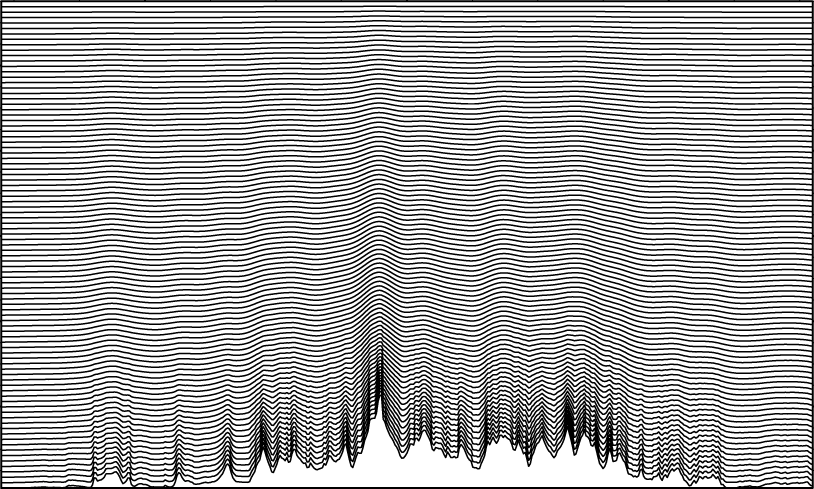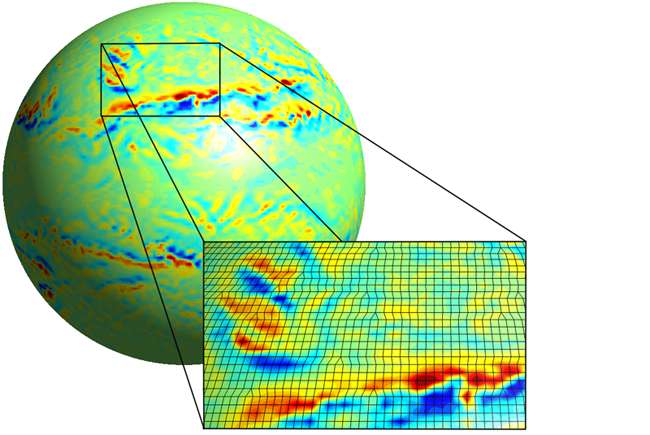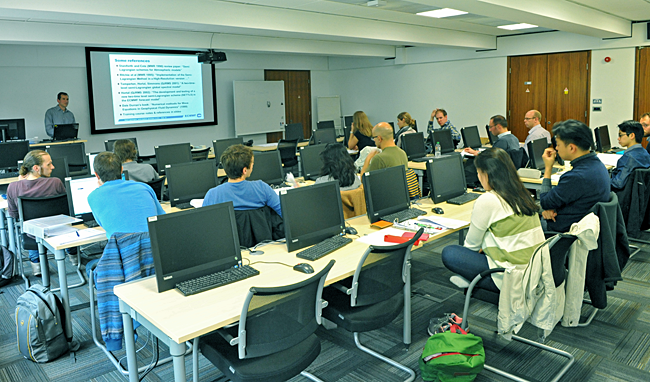

A training course being held at ECMWF from 1 to 5 June delves deep into the methods that lie at the heart of numerical weather prediction (NWP) and Earth-system modelling.
NWP uses the laws of physics to predict how the weather will evolve given the current state of the atmosphere.
The equations involved are complex and can only be solved using numerical methods. ECMWF’s course on ‘Advanced Numerical Methods for Earth-System Modelling’ covers numerical and computational techniques currently employed in NWP as well as potential future methods, with an emphasis on research conducted at ECMWF.
NWP divides the atmosphere into a mesh of points at which the laws of physics are applied. One of the topics the course discusses is the different ways of defining such a mesh and their respective benefits.
For example, in the vicinity of a mountain range the mesh can be adapted to smoothly follow the contours of the mountains.

The mesh used by forecasters can be made to smoothly follow the contours of mountainous terrain, such as the Alps, seen here in cross-section from west to east.
Scalability
A key requirement any new methods must meet is their computational efficiency on tomorrow’s massively parallel supercomputers. NWP centres across the world are grappling with this ‘scalability’ challenge.
In the search for scalable alternatives, more local time-stepping methods are being investigated. The course reviews these methods as well as alternative equation sets and the multi-scale nature of their solutions. The numerical treatment of the redistribution of energy in the vertical as a result of convection is also discussed.
“This is an interdisciplinary course at the crossroads of meteorology, physics, mathematics and computer science,” says Piotr Smolarkiewicz, a Consultant in the Research Department and one of the lecturers on the course.

One of the issues addressed on the course is the numerical treatment of vertical atmospheric motion, shown here in a model climate simulation.
The course, attended by 19 participants from 10 countries, is part of ECMWF’s NWP training programme. Courses on ‘Data assimilation’, ‘Predictability and ocean-atmosphere ensemble forecasting’ and ‘Parametrization of sub-grid physical processes’ were held earlier this year.

The course is part of a wider NWP training programme run by ECMWF.